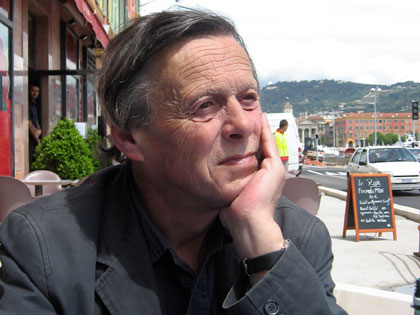In another life, Maeve Brennan could have been my mother, and in a way I see her as such. Born within two years of each other, they were Dubliners from neighbouring suburbs – my mother from Richmond Hill in Rathmines, Maeve from Cherryfield Avenue, a mile away in Ranelagh. Both of them were thin, petite, pretty and vivacious, both were fond of a drink, and both were essentially lonely souls, a state recorded by each of them in different ways – by my mother in an occasional and poignant diary and by Maeve in her incomparable stories of middle-class Dublin life in the early decades of the 20th century.
Ten years ago, almost all of Maeve Brennan’s Dublin stories were collected in a volume called The Springs of Affection. Until then, and despite the fact that she had died as recently as 1993, she was unknown as an Irish writer. The New Yorker, where she worked, had been publishing her fiction since the early 1950s, and in the late 60s and early 70s two volumes of stories – In and Out of Never-Never Land and Christmas Eve – had appeared in the United States, as had a marvellous book of Manhattan vignettes called The Long-Winded Lady, but they were never published on this side of the Atlantic and you won’t find her name in any of the standard guides to Irish literature.
The story of her later life is as heartbreaking as much of her fiction, though her career had begun with great promise. The daughter of Robert Brennan, Ireland’s first envoy to Washington, she went with the family to the US in 1933, when she was sixteen, and she remained on when they returned to Ireland in 1949, soon acquiring a job at the New Yorker.
In his introduction to The Springs of Affection, her great editor and friend William Maxwell recalled the high-spirited, witty, impish Maeve he first encountered at the magazine’s offices on West 43rd Street. But life wasn’t to remain like that. “Many men and women,” Maxwell writes, “found Maeve enchanting, and she was a true friend, but there wasn’t much you could do to save her from herself.” She had an unsuccessful marriage with an alcoholic New Yorker writer, then lived alone in various apartments and small hotels in the city, constantly getting into debt.
And it got worse. “She had begun,” Maxwell writes, “to have psychotic episodes, and she settled down in the ladies’ room at the New Yorker as if it were her only home. Nobody did anything about it, and the secretaries nervously accommodated themselves to her sometimes hallucinated behaviour, which could turn violent.” Towards the end, after a couple of unhappy trips back to Dublin, she became hospitalised and died with only a few friends to mourn her passing.
All of this would be just very, very sad if it weren’t for the fact that, from the early 1950s to the early 70s, she wrote a score of short stories as great as any that have been written by an Irish writer. Although she was an exile for most of her life, in her imagination, like Joyce, she never left Dublin and it is there – specifically in the Cherryfield Avenue house of her childhood and girlhood – that almost all these stories are set.
They concern two married couples, first the Derdons and then the Bagots, both of them probably modelled on her parents, and in simple but beautifully evocative prose, they capture the small exhilarations and larger disappointments that happen to decent people trying to find fulfilment but instead encountering the emptiness that lies at the heart of so many of our lives.
But though a profound understanding of loneliness pervades these stories, there’s a remembrance of happiness, too, as in her final journalistic piece for the New Yorker in which she recalls a moment from her girlhood. She writes:
“One New Year’s Eve, something marvellous happened on our little street. It wasn’t called a street; it was called an avenue. Cherryfield Avenue. What happened that New Year’s Eve was that in the late afternoon word went round from house to house that a minute or so before midnight we would all step out into our front gardens, or even into the street, leaving the front doors open, so that the light streamed out after us, and there we would wait to hear the bells ringing in the New Year. I nearly went mad with excitement and happiness. I know I jumped for joy. That New Year’s Eve was one of the great occasions of our lives.”
And in that glimpse of Maeve the young girl, with all her hopes and dreams still before here, I catch a glimpse of my mother, too, before adulthood and age took their cruel, betraying toll on both of them.
